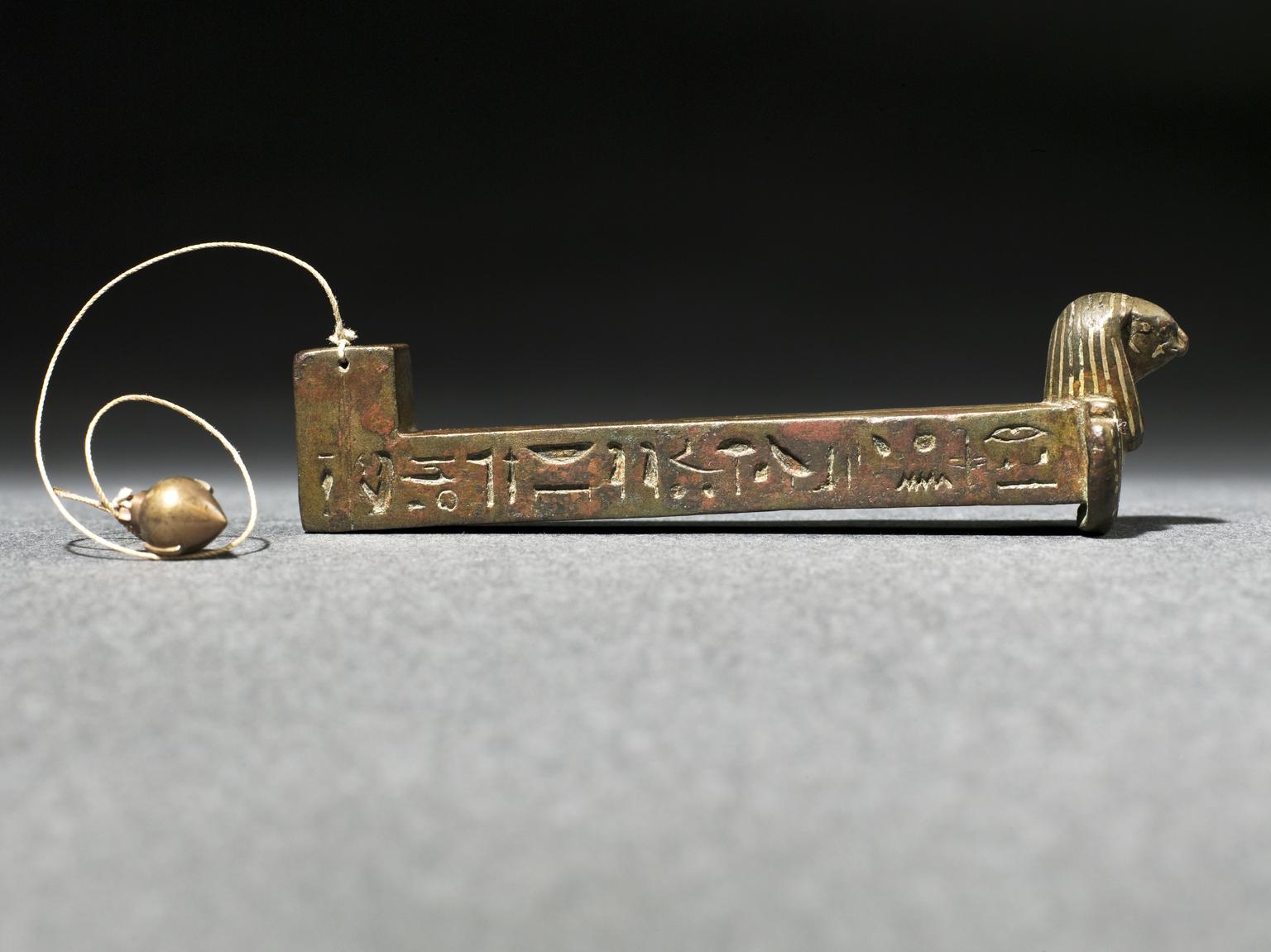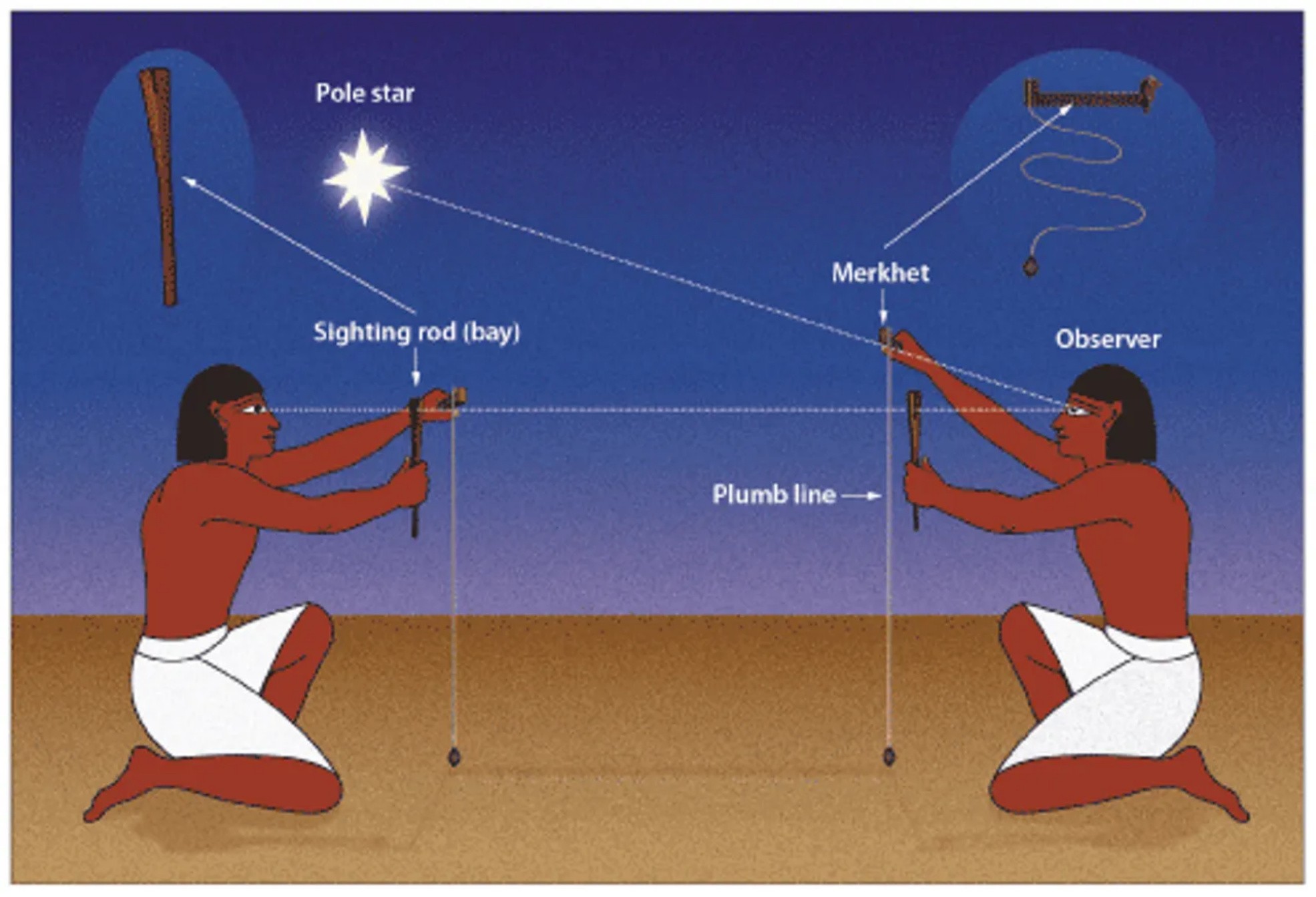In ancient Egypt, the merkhet was a remarkable device used for the purpose of telling time at night and making astronomical observations. This article explores the fascinating history, design, and significance of the merkhet in ancient Egyptian society.

The origins of the Merkhet
The merkhet, also known as the “instrument of knowing,” was an ancient Egyptian device that revolutionized timekeeping and astronomical observations. Its exact origins are shrouded in mystery, but it is believed to have been developed around 600 BCE. The earliest known merkhets were made of bronze and featured hieroglyphic text inlaid with electrum, a precious metal alloy of gold and silver.
Design and functionality

The design of the merkhet was elegantly simple yet highly effective. It consisted of a straight bar made from wood or bone, attached to a plumb line. The plumb line, a weighted line used to establish a vertical reference, was crucial for accurate timekeeping and aligning structures. The merkhet was aligned with the North star, and a second merkhet was used to establish a North-south meridian, providing a reference point for tracking celestial movements.
Timekeeping with the Merkhet
The merkhet played a vital role in determining time during the night. By observing the passage of specific stars across the meridian, ancient Egyptians could accurately measure the hours. The merkhet allowed astronomers to track the movement of celestial bodies and make precise astronomical observations. During the day, when stars were not visible, sundials were used to mark the passing of hours.
Astronomical observations
Beyond timekeeping, the merkhet enabled ancient astronomers to map the skies and deepen their understanding of celestial bodies. With the assistance of a sighting tool called a bay, astronomers could make detailed observations and measurements. The merkhet, combined with the bay, was a powerful instrument for studying the night sky and unraveling the mysteries of the cosmos.
Merkhets in Ancient Egyptian society
The significance of the merkhet extended beyond timekeeping and astronomy. It is believed that merkhets were used in the construction of temples and tombs to align the structures in specific ways. The precise alignment of these sacred buildings was of utmost importance to the ancient Egyptians, as it symbolized their connection with the divine and the celestial realms.
Merkhets on display
Today, several extant merkhets can be found on display in museums with collections of Egyptian artifacts. These remarkable artifacts provide a tangible link to the past and offer insights into the advanced scientific knowledge and technological achievements of ancient Egyptian civilization. Numerous works of Egyptian art also depict the use of merkhets, further emphasizing their significance in ancient society.
Merkhet’s influence afterwards
It is true that the invention of the merkhet revolutionized timekeeping and astronomy in ancient Egypt. But prior to its development, people relied on less accurate methods such as water clocks. The merkhet’s precision and ability to make scientific observations had a profound impact on Egyptian mythology and cosmology. It allowed for a deeper understanding of the celestial realm and the interconnectedness of the earthly and divine spheres.
While modern timekeeping devices have rendered the merkhet obsolete, its legacy lives on. Some enthusiasts recreate their own versions of the merkhet, providing a glimpse into the world of ancient Egyptian astronomers. Science museums occasionally allow visitors to experience the merkhet firsthand, along with other ancient astronomical instruments like astrolabes, fostering a deeper appreciation for the ingenuity of our ancestors.
Final words
The merkhet stands as a testament to the remarkable scientific achievements of ancient Egypt. This simple yet powerful instrument transformed timekeeping and astronomy, allowing for greater precision and understanding of the celestial realm. As we marvel at the preserved merkhets in museums and explore their depictions in Egyptian art, we gain a deeper appreciation for the ingenuity and wisdom of ancient civilizations. The merkhet continues to inspire us to unravel the mysteries of the cosmos and seek knowledge that transcends time.




